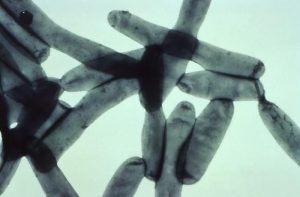NewsDesk @bactiman63
Riverside University Health System-Public Health is investigating a cluster of Legionnaires’ disease in Palm Springs, Palm Desert and some surrounding communities stretching back months.

Health officials are aware of 20 confirmed cases of which 14 individuals were hospitalized. Two deaths were reported: one resident of Riverside County and the other a visitor to the area.
The cases were reported to Public Health between the Fall of 2021 and early 2022. Public Health is coordinating investigative activities with the California Department of Public Health (CDPH) and Centers for Disease Control and Prevention (CDC).
The source of the illness and extent of spread has not been determined, but health officials said it was important for the public to be aware of the outbreak.
“This is a continuing investigation. The risk to anyone who lives in Palm Springs, Palm Desert, and surrounding areas is low,” said Dr. Geoffrey Leung, public health officer for Riverside County. “The Department recommends that individuals who live in the identified areas who become ill with pneumonialike/respiratory symptoms, such as fever, chills, cough, shortness of breath, muscle aches, and headache, visit their healthcare provider.”
Subscribe to Outbreak News TV on YouTube
As it can take up to two weeks for symptoms to develop, Public Health recommends that those who develop symptoms within two weeks of being in the identified areas also seek medical attention. Public Health has alerted healthcare providers in the area.
Legionnaires’ disease is treatable with antibiotics and is not spread person to person.
Most healthy people exposed to Legionella do not develop Legionnaires’ disease. People over 65, especially those who smoke cigarettes, or those with certain medical conditions, including weakened immune systems, chronic lung disease or other chronic health conditions, are at increased risk for Legionnaires’ disease.
Legionnaires’ disease is a type of pneumonia (lung infection) caused by bacteria called Legionella. People can get Legionnaires’ disease by breathing in aerosolized (small droplets) water containing Legionella bacteria. Aerosolized water can come from cooling towers (air-conditioning units for large buildings), hot tubs, cooling misters, decorative fountains, and plumbing systems.
As part of the continuing investigation, Public Health is taking steps to try and identify possible sources of the bacteria and make recommendations for remediation. Investigations into these types of Legionnaires’ clusters are complex. It is often not possible to determine the origin of the bacteria that infected people.
- Rat Hepatitis E virus could be considered an emerging disease in Europe: Study
- Highly pathogenic avian influenza confirmed in Kansas and Illinois backyard flocks
- Sweden: Confirmed cases of COVID-19 continue to decrease
- Denmark reports COVID-19 infections down for the third week in a row, Influenza rates rising
- Timor-Leste dengue outbreak tops 3,000 cases
- Scotland: H5N1 bird flu detected backyard flock near Collieston, Aberdeenshire
- Liberia reports 17 confirmed Lassa fever cases through February
- Israel polio situation: More information
- Typhoid fever: DRC reports 142K cases in January

